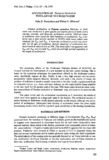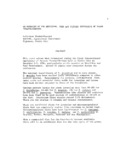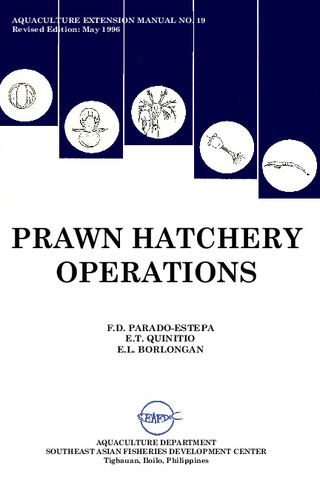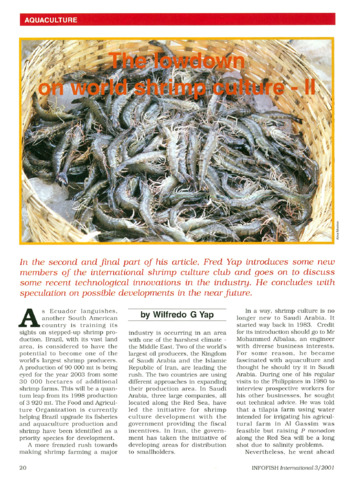Acclimation of Penaeus monodon postlarvae to fresh water
Share
Abstract
Gradual acclimation of Penaeus monodon Fabricius to fresh water was conducted in glass aquaria and marine plywood tanks over a one-day, two-day, and three-day acclimation periods. Different stages of postlarvae were tested for their hardiness to acclimation. P35 postlarvae had a high percent survival of 98-99% while lower values were obtained for P20 and P90. A three-day acclimation period was favorable for all ages of postlarvae. Shorter durations of acclimation produced survival values as low as 20% This stress effect was apparent with P20 and P90 but not with P35 which showed high survival regardless of the length of acclimation.
Suggested Citation
Pantastico, J. B., & Oliveros, E. N. (1980). Acclimation of Penaeus monodon postlarvae to fresh water. Fisheries Research Journal of the Philippines , 5(1), 33-38. http://hdl.handle.net/10862/1038
Taxonomic term
Collections
- AQD Journal Articles [1248]
Related items
Showing items related by title, author, creator and subject.
-
An overview of the nutrition, feed and feeding techniques of prawn penaeid/shrimps
Piedad-Pascual, Felicitas (Philippine Council for Aquatic and Marine Research and Development, 1989)This paper echoes what transpired during the first International Conference of Penaeid Prawns/Shrimps held in Iloilo City in December 4-7, 1984, particularly on the Nutrition nd Feed Development. Around 25 papers were ... -
Prawn hatchery operations
Parado-Estepa, Fe D.; Quinitio, Emilia T.; Borlongan, Emeterio L. (Aquaculture Department, Southeast Asian Fisheries Development Center, 1996-05)The manual, an updated version of the 1984 SEAFDEC/AQD manual, presents the underlying principles and step-by-step instructions of prawn larval and post-larval rearing. The techniques described are not only applicable to ... -
The lowdown on world shrimp culture - II
Yap, Wilfredo G. (INFOFISH, 2001)This paper introduces some new members of the international shrimp culture club and goes on to discuss some recent technological innovations in the industry, particularly the polyculture of tilapia (mainly Oreochromis ...




